CJE 4647
1/59
There's no tags or description
Looks like no tags are added yet.
Name | Mastery | Learn | Test | Matching | Spaced |
|---|
No study sessions yet.
60 Terms
Forensic Science
The application of science to criminal and civil laws.
Alphonse Bertillion
devised the first scientific system of personal identification in 1879.
Francis Galton
conducted the first definitive study of fingerprints and their classification.
Locard’s Exchange Principle
states that whenever two objects come into contact, a criminal and an object or person, there is a transfer of material between them. (Cross contamination).
Frye v. United States
A landmark case from 1923 that established the "Frye Standard," determining the admissibility of scientific evidence in court based on whether the technique is generally accepted by the relevant scientific community.
Line/Strip Search Pattern
one or two investigators start at the boundary of the crime scene and search in straight lines across to the other side of the crime scene.
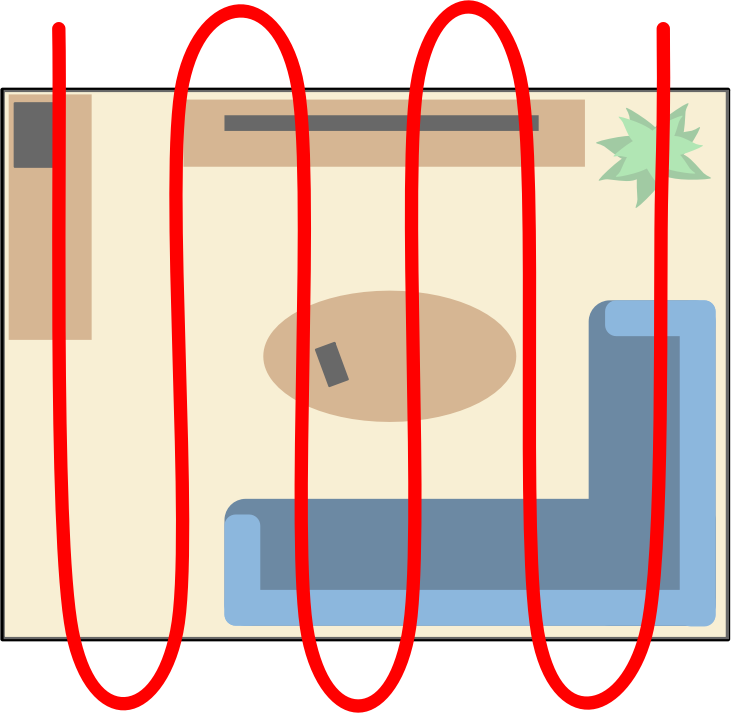
Grid Search Pattern
Two or more investigators form a grid by searching in line patterns that overlap and are perpendicular to each other.
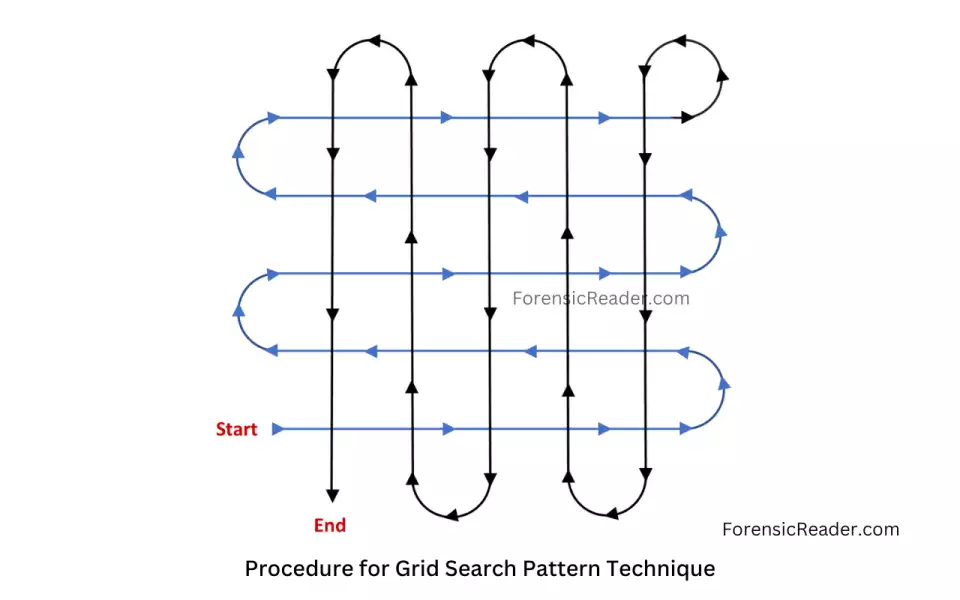
Spiral Search Pattern
One investigator searches in a spiral path from the center of the crime scene to the boundary (outward) or from the boundary of the crime scene to the center (inward).
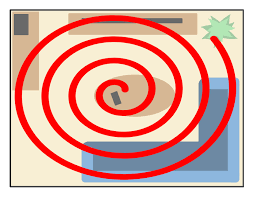
Wheel/Ray Search Pattern
Several investigators search in straight lines from the center to the boundary (outward) or from the boundary to the center (inward).
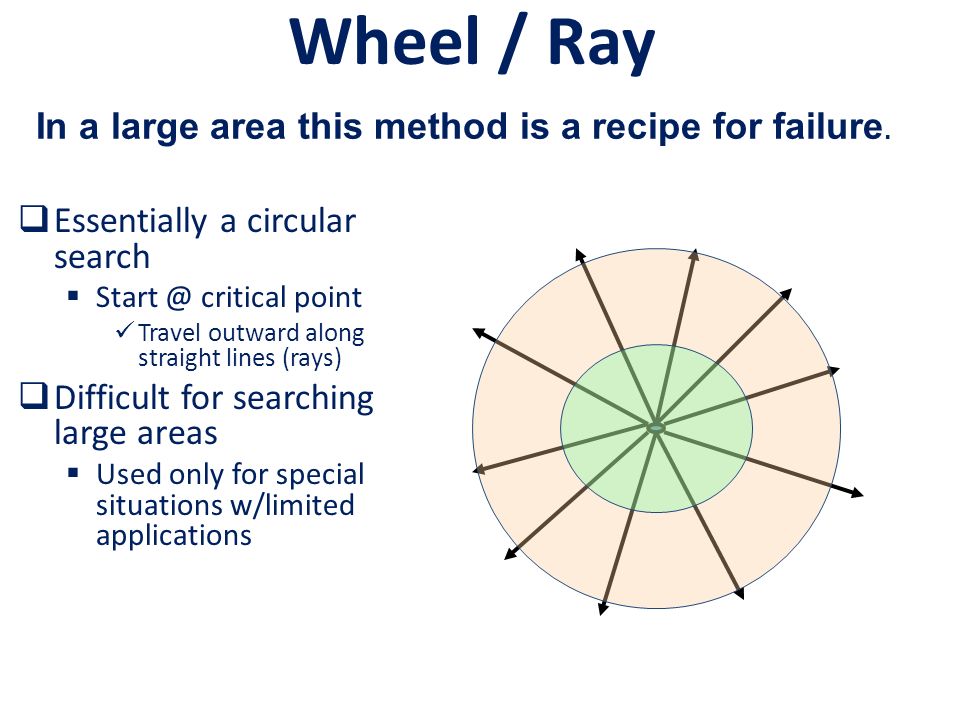
Quadrant/Zone Search Pattern
The crime scene is divided into smaller sections (zones). One or more investigators are assigned to search each zone.
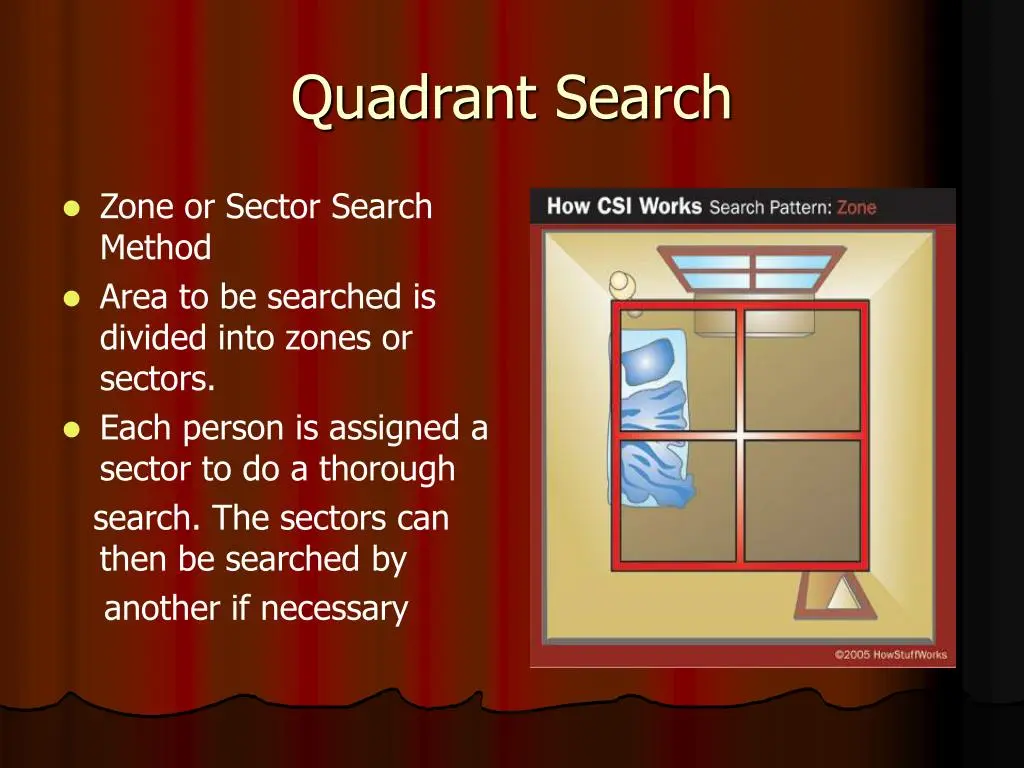
Vehicle Searches
Investigators search interior and exterior of vehicle.
--The vehicle may be searched at the crime scene or at the police department or crime laboratory garage.
Night Searches
Investigators avoid carrying out outdoor or dark indoor crime scene searches at night.
If possible, the crime scene is secured and guarded until morning. This ensures safety and preserves evidence.
Crime Scene Notes
Note taking begins when the investigator is contacted and requested to report to the crime scene.
The crime scene notes should begin with:
1)The identity of person who contacted the investigator
2) Time of contact and arrival at the crime scene
3) Preliminary case information
4) Personnel present on arrival and those being contacted.
Crime Scene Photography
Contains:
1) Show the layout of the crime scene
2) Show the position of collected and uncollected evidence
3) Show the point of view of victims, suspects, and witnesses
4) Show the original condition of items of evidence at the scene.
Overview Photographs
the entire scene and surrounding area, including points of exit and entry, are taken first.
Medium-Range Photographs
show the layout of smaller significant areas of the crime scene. Include at least one photograph of the “center” of the scene.
Close-up Photographs
taken last and show greater detail of individual objects or evidence.
--Taken at a 90º angle to the object, with and without evidence markers and scales
--For three-dimensional objects, oblique lighting may be needed to show depth details.
Crime Scene Sketches
1)Clearly show the layout of a crime scene
2)Illustrate the relationship in space of all significant items and features
3)Clarify objects and features already described in notes or shown in photographs
4)Show measurements over long distances and topography of outdoor scenes
5)Depict possible paths of entry, exit, and movement through the scene
6)Demonstrate whether the account of a victim, suspect, or witness is feasible.
Finished Sketch
created from the information in rough sketch, but it is drawn to scale with care and concern for appearance.
Physical Evidence
encompasses any and all objects that can establish that a crime has been committed or can provide a link between a crime and its victim or a crime and its perpetrator.
Types of Physical Evidence
Blood, semen, and saliva
Documents
Drugs
Explosives
Fibers
Fingerprints
Firearms and ammunition
Glass
Hair
Impressions
Organs and physiological fluids
Paint
Petroleum products
Plastic bags
Plastic, rubber, and other polymers
Powder residues
Soil and minerals
Tool marks
Vehicle lights
Wood and other vegetative matter
Chain of Custody
a list of all persons who came into possession of an item of evidence.
Crime Scene Safety
Crime scene personnel wear a minimum of latex gloves (double gloved) and protective shoe covers. In cases of large contamination areas, coveralls are also recommended.
The use of a particle mask/respirator, goggles, or face shield is recommended in addition to the minimum protective items when potentially infectious dust or mist are present. (PPE)
Personnel should maintain a red biohazard plastic bag for the disposal of contaminated gloves, clothing, masks, pencils, wrapping paper, and so on.
Identification
the determination of the physical or chemical identity of a substance with as near absolute certainty as existing analytical techniques will permit.
Identification Process
first requires the adoption of testing procedures that give characteristic results for specific standard materials.
Once these test results have been established, they may be permanently recorded and used repeatedly to prove the identity of suspect materials.
Second, it requires that the number and type of tests needed to identify a substance be sufficient to exclude all other substances.
Individual Characteristics
Evidence that can be associated to a common source with an extremely high degree of probability.
Individual Characteristics Examples
the matching ridge characteristics of two fingerprints
comparison of random striation markings on bullets or tool marks
the comparison of irregular and random wear patterns in tire or footwear impressions
the comparison of handwriting characteristics
the fitting together of the irregular edges of broken objects in the manner of a jigsaw puzzle
matching sequentially made plastic bags by striation marks running across the bags
Class Characteristics
Measurable features of evidence that indicate a restricted group source, but not a unique, individual item.
Class Characteristics Examples
Paint chips
Glass fragments
Types of fibers
Tire tread patterns
Shoe prints
Blood types
Tool marks
Handwriting
Bullet caliber
Automated Fingerprint Identification System (AFIS)
A national fingerprint and criminal history system maintained by the FBI. The ability of a computer to scan and digitally encode fingerprints so that they can be subject to high-speed computer processing.
Latent Prints
Once the finger touches a surface, body perspiration and/or oils present on the finger ridges are transferred to that surface, leaving an impression.
Visible Prints
also known as patent prints, made when fingers touch a surface after the ridges have been in contact with a colored material such as blood, paint, grease, or ink.
Patent prints
Also referred to as visible prints, fingerprints seen with the naked eye.
Three classes of fingerprints
L.A.W
Loop prints
one or more ridges entering from one side of the print, recurving, and exiting from the same side.
Arch prints
is formed by ridges entering from one side of the print, rising and falling, and exiting on the opposite side (like a wave).
Whorl prints
type lines and a minimum of two deltas.
Porous Surfaces
A structure with many small holes or spaces, allowing liquids and gases to pass through, especially slowly.
Porous Examples
Sponges
wood
rubber
some rocks
some types of hair.
Non-porous Surfaces
Do not have interconnected pores or openings that allow liquids or gases to pass through.
Non-porous Examples
Plastic
metal
glass
leather
vinyl
sealed tiles
some plastics.
Opiates Examples
Morphine
Heroin
Codeine
OxyContin
Methadone
Opiates
extracted from opium and is used to synthesize heroin.
Hallucinogens
cause marked changes in normal thought processes, perceptions, and moods.
Marijuana
Most well known hallucinogen.
preparation derived from the plant Cannabis
Hallucinogens Examples
Marijuana
LSD
PCP
MDMA
Depressants
substances used to depress the functions of the central nervous system.
Depressants Examples
Alcohol
Barbiturates (Downers)
Tranquilizers
Substances to be sniffed
Stimulants
substances taken to increase alertness or activity, followed by a decrease in fatigue and a loss of appetite.
Stimulants Examples
Amphetamines
Methamphetamines
Cocaine
Crack
Club Drugs
synthetic drugs that are used at nightclubs, bars, and raves (all-night dance parties).
Club Drug Examples
MDMA
GHB
Rohyphol
Ketamine
Methamphetamine
Anabolic Steroids
synthetic compounds that are chemically related to the male sex hormone testosterone.
Schedule I drugs
a high potential for abuse and have no currently accepted medical use such as heroin, marijuana, methaqualone, and LSD.
Schedule II drugs
a high potential for abuse and have medical use with severe restrictions such as cocaine, PCP, and most amphetamine and barbiturate prescriptions.
Schedule III drugs
drugs have less potential for abuse and a currently accepted medical use such as all barbiturate prescriptions not covered under Schedule II, such as codeine and anabolic steroids.
Schedule IV drugs
a low potential for abuse and have a current medical use such as darvon, phenobarbital, and some tranquilizers such as diazepam (valium) and chlordiazepoxide (librium).
Schedule V drugs
low abuse potential and have medical use such as opiate drug mixtures that contain nonnarcotic medicinal ingredients.
Trace evidence
small, often microscopic, pieces of physical evidence that are transferred during the commission of a crime.
Trace evidence Examples
Hair
Fibers
Paint
Glass
Gunshot residue
Soil